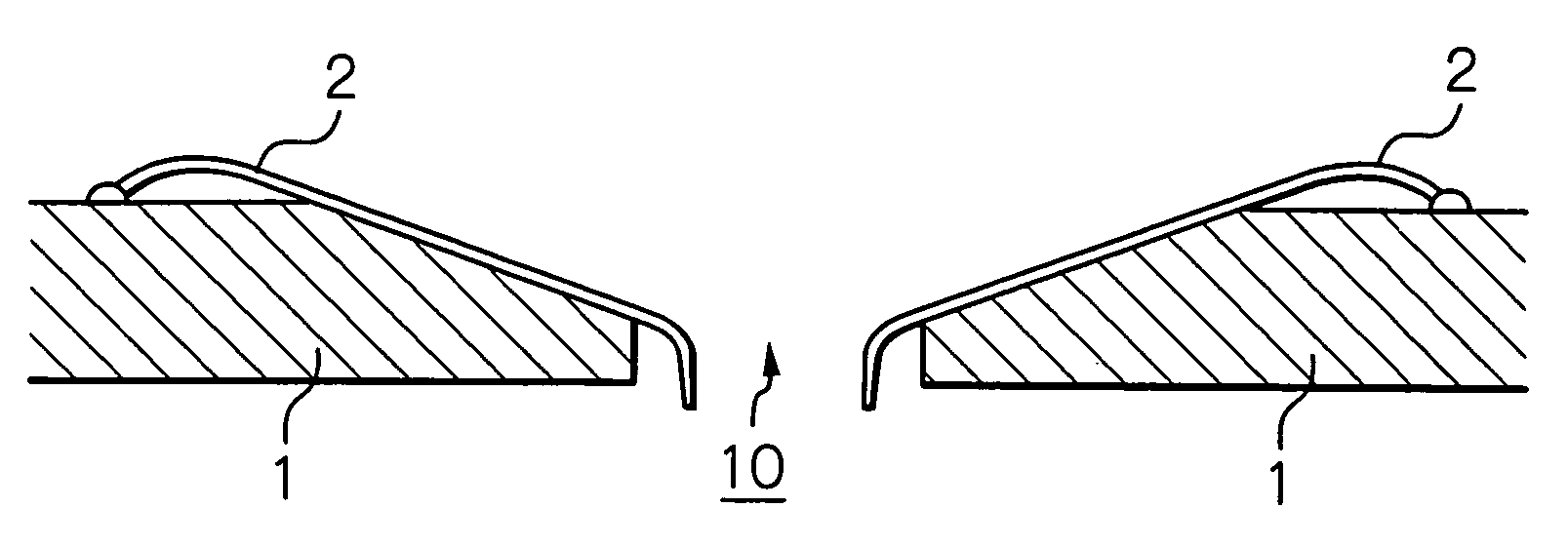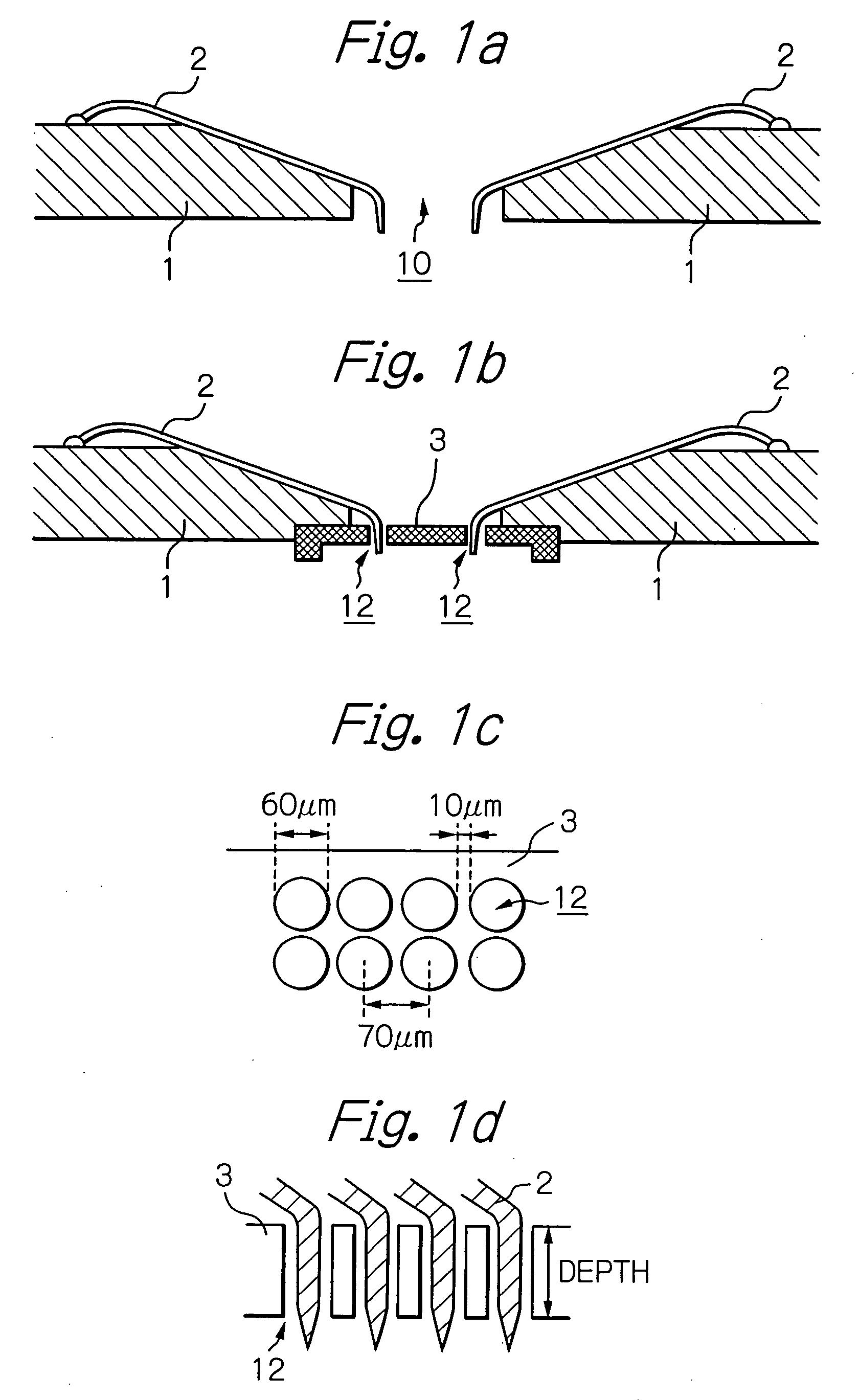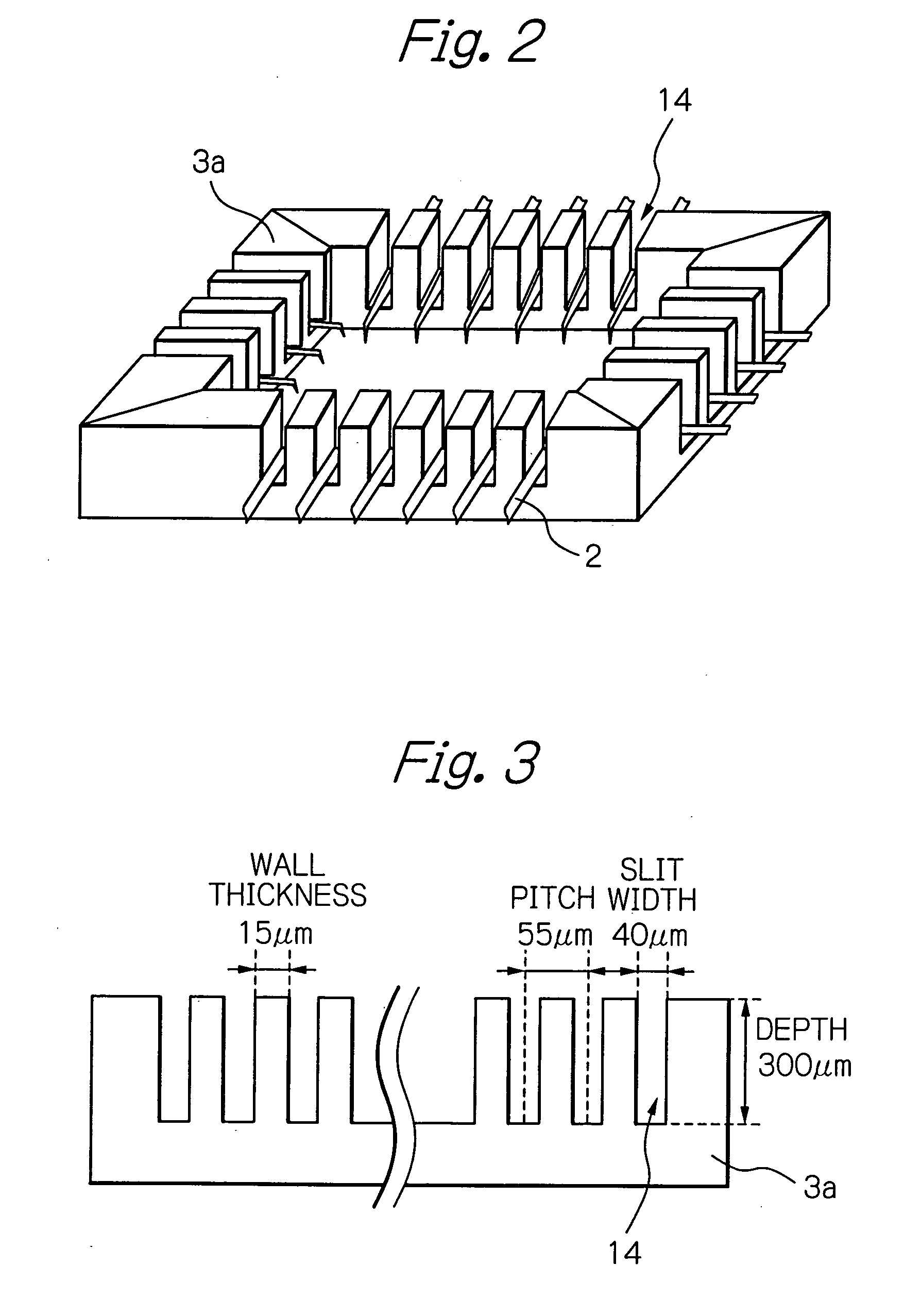Machinable ceramic
a technology of machined ceramics and ceramics, applied in the field of machined ceramics, can solve the problems of reducing the value of a commercial product made from materials, difficult to machine most ceramic materials, and materials with high strength, and achieve the effect of low reflectivity and good machinability
- Summary
- Abstract
- Description
- Claims
- Application Information
AI Technical Summary
Benefits of technology
Problems solved by technology
Method used
Image
Examples
examples
[0073]The following examples illustrate the present invention with no intention of limiting it. In the following description, unless otherwise specified, % means mass % and parts means parts by mass.
examples 1 – 8
Examples 1–8
[0074]Powder of hexagonal boron nitride (h-BN) with an average particle diameter of 0.9 micrometers and a purity of 99%, zirconia powder with an average particle diameter of 0.1 micrometers, and optionally silicon nitride powder with an average particle diameter of 0.1 micrometers were mixed in the proportions shown in Table 1 to prepare a main constituent raw material powder. A sintering aid consisting of 2% of alumina and 6% of yttria based on the main constituent raw material powder was added to the main constituent raw material powder and mixed therewith in a wet ball mill using ethyl alcohol as a solvent. The ball mill had a polyethylene pot, and zirconia balls were used as a mixing medium. The resulting slurry was dried in a vacuum evaporator to obtain a raw material powder.
[0075]A graphite die was filled with the raw material powder, and hot press sintering was carried out at 1600° C. for 2 hours while applying a pressure of 30 MPa in a nitrogen atmosphere to obta...
example 9
[0083]Powder of hexagonal boron nitride (h-BN) having an average particle diameter of 0.9 micrometers and a purity of 99%, and zirconia powder having an average particle diameter of 0.8 micrometers were mixed in the proportions shown in Table 1. A sintered body was prepared and the resulting sintered body was tested in the same manner as described in Examples 1–8. The results are also shown in Table 1. A decrease in bending strength compared to the previous examples was observed.
PUM
| Property | Measurement | Unit |
|---|---|---|
| mass % | aaaaa | aaaaa |
| particle diameter | aaaaa | aaaaa |
| mass % | aaaaa | aaaaa |
Abstract
Description
Claims
Application Information
 Login to View More
Login to View More - R&D
- Intellectual Property
- Life Sciences
- Materials
- Tech Scout
- Unparalleled Data Quality
- Higher Quality Content
- 60% Fewer Hallucinations
Browse by: Latest US Patents, China's latest patents, Technical Efficacy Thesaurus, Application Domain, Technology Topic, Popular Technical Reports.
© 2025 PatSnap. All rights reserved.Legal|Privacy policy|Modern Slavery Act Transparency Statement|Sitemap|About US| Contact US: help@patsnap.com



